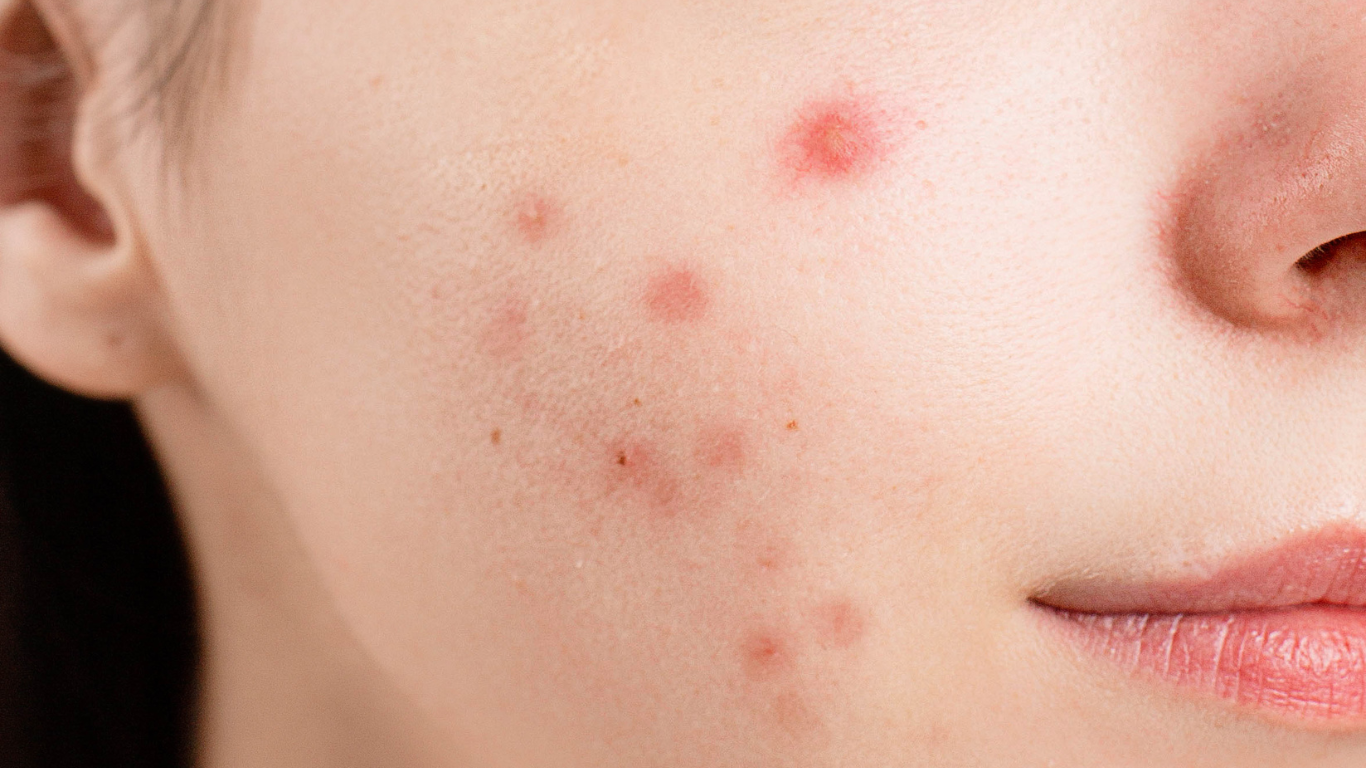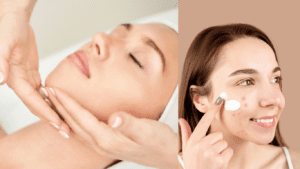Blemish is one of the most common skin concerns, affecting people of all ages and skin types. Whether it’s a stubborn pimple, a dark spot, or redness from inflammation, blemishes can impact self-confidence and skin health. Thankfully, with advancements in skin care products and a better understanding of how blemishes form, it’s easier than ever to treat and prevent them.
In this comprehensive guide, we’ll explore everything you need to know about blemishes, the best products for treating them, and how to maintain clear, blemish-free skin.
1. What Are Blemishes?
Blemishes refer to any type of mark, spot, discoloration, or imperfection on the skin. The most common types of blemishes are acne-related, but they can also include dark spots, redness, scars, and broken capillaries. Blemishes often occur when pores become clogged with excess oil, dirt, or dead skin cells, leading to inflammation and breakouts.
While blemishes are often temporary, they can leave long-lasting marks or scars if not treated properly. Understanding what causes blemishes is the first step toward achieving clearer skin.
2. Types of Blemishes
Not all blemishes are the same. Here are some of the most common types:
1. Pimples:
Pimples are inflamed blemishes that occur when hair follicles become clogged with oil and bacteria. They can range from small whiteheads to large cysts and are the most common type of blemish associated with acne.
2. Blackheads:
These are small, dark spots that form when pores become clogged with oil and dead skin cells. Unlike pimples, blackheads are open at the surface of the skin, which causes the clog to oxidize and turn black.
3. Whiteheads:
Whiteheads are closed comedones that occur when oil and debris are trapped under the skin, leading to a small white bump. They are typically less inflamed than pimples but can still contribute to breakouts.
4. Dark Spots (Post-Inflammatory Hyperpigmentation):
These are flat, dark patches that remain after a pimple or blemish heals. Hyperpigmentation is caused by an overproduction of melanin in response to inflammation.
5. Acne Scars:
Scars form when blemishes damage the deeper layers of the skin. They can appear as indented marks (atrophic scars) or raised areas (hypertrophic scars) and are typically harder to treat than other types of blemishes.
6. Redness (Post-Inflammatory Erythema):
After a blemish heals, red or pink spots may remain due to inflammation and broken capillaries. This is common in people with lighter skin tones and may take weeks to fade.
3. Causes of Blemishes
Blemishes can be triggered by various factors, including:
1. Excess Oil Production:
When your skin produces too much sebum (oil), it can clog pores and lead to breakouts. Hormonal changes during puberty, pregnancy, or menstrual cycles often trigger excess oil production.
2. Bacteria:
The bacteria Propionibacterium acnes can cause inflammation in clogged pores, leading to pimples, cysts, and other acne-related blemishes.
3. Dead Skin Cells:
If your skin does not shed dead cells properly, they can mix with oil and clog pores, leading to blemishes.
4. Hormonal Imbalances:
Hormonal fluctuations, such as those caused by puberty, stress, or contraceptives, can increase oil production and contribute to acne.
5. Diet:
High glycemic foods and dairy products are often linked to increased acne and blemishes. Some studies suggest that these foods can cause a spike in insulin, which may stimulate oil production and inflammation.
6. Environmental Factors:
Pollution, dirt, and other environmental aggressors can settle on the skin, clogging pores and causing blemishes.
7. Stress:
Stress triggers the release of cortisol, a hormone that can increase oil production and exacerbate existing skin conditions like acne.
8. Inadequate Skincare:
Using the wrong skincare products or neglecting proper cleansing can worsen blemishes. Overuse of harsh products or skipping moisturizer can also disrupt the skin’s barrier, leading to more breakouts.
4. Key Ingredients for Treating Blemishes
When it comes to treating blemishes, the right ingredients are crucial. Here are some of the most effective ingredients to look for in acne and blemish-fighting products:
1. Salicylic Acid:
A beta hydroxy acid (BHA), salicylic acid exfoliates the skin and unclogs pores. It penetrates deep into the skin, making it ideal for treating blackheads, whiteheads, and other non-inflammatory blemishes.
2. Benzoyl Peroxide:
This ingredient kills acne-causing bacteria and reduces inflammation. It’s highly effective against red, inflamed pimples and cystic acne.
3. Niacinamide:
A form of vitamin B3, niacinamide helps reduce inflammation, control oil production, and fade dark spots, making it a versatile ingredient for both active blemishes and post-blemish hyperpigmentation.
4. Retinoids:
Retinoids increase cell turnover and prevent clogged pores, making them effective for treating both acne and fine lines. Prescription-strength retinoids like tretinoin are more potent, but over-the-counter options like retinol are also helpful.
5. Alpha Hydroxy Acids (AHAs):
Glycolic acid and lactic acid are AHAs that exfoliate the skin’s surface, improve texture, and lighten dark spots caused by blemishes.
6. Sulfur:
Sulfur helps absorb excess oil and dry out pimples. It’s a good option for people with sensitive skin who can’t tolerate benzoyl peroxide or salicylic acid.
7. Tea Tree Oil:
A natural antibacterial ingredient, tea tree oil helps fight acne-causing bacteria and reduce inflammation without being too harsh on the skin.
5. Best Skincare Products for Blemishes
Here are some of the top-rated skincare products for treating blemishes:
1. Paula’s Choice Skin Perfecting 2% BHA Liquid Exfoliant (Salicylic Acid):
This popular product is known for its ability to unclog pores, smooth skin texture, and reduce redness, making it a favorite for acne-prone skin.
2. La Roche-Posay Effaclar Duo Dual Action Acne Treatment (Benzoyl Peroxide + Salicylic Acid):
Combining benzoyl peroxide and salicylic acid, this product targets both existing blemishes and future breakouts while being gentle on sensitive skin.
3. The Ordinary Niacinamide 10% + Zinc 1% (Niacinamide):
This affordable serum helps control oil production and fades dark spots, making it perfect for those dealing with post-acne marks.
4. Differin Gel (Adapalene):
A topical retinoid, Differin Gel is highly effective for preventing and treating acne. It helps reduce pore blockage and prevents new blemishes from forming.
5. Mario Badescu Drying Lotion (Sulfur + Salicylic Acid):
This spot treatment helps dry out pimples overnight, making it a go-to product for dealing with isolated breakouts.
6. How to Build a Blemish-Prevention Skincare Routine
To prevent blemishes and maintain clear skin, it’s essential to follow a consistent skincare routine. Here’s a step-by-step guide:
Step 1: Cleanse (AM and PM)
Use a gentle, non-comedogenic cleanser to remove excess oil, dirt, and makeup. Look for cleansers containing salicylic acid or benzoyl peroxide if you’re prone to breakouts.
Step 2: Exfoliate (2-3 Times a Week)
Exfoliation removes dead skin cells that can clog pores. Use a chemical exfoliant like salicylic acid or AHAs to prevent irritation.
Step 3: Tone (Optional)
A toner can help balance your skin’s pH and remove any leftover impurities after cleansing. Look for toners with soothing ingredients like witch hazel or rose water.
Step 4: Treat (AM and PM)
Apply targeted treatments to address blemishes. Use a salicylic acid serum or benzoyl peroxide cream in the morning and a retinoid treatment at night for maximum effectiveness.
Step 5: Moisturize (AM and PM)
Even acne-prone skin needs hydration. Choose a lightweight, oil-free moisturizer that won’t clog pores.
Step 6: Protect (AM)
Sunscreen is crucial to prevent hyperpigmentation and protect your skin from UV damage. Use a broad-spectrum sunscreen with at least SPF 30 daily.
7. Do’s and Don’ts for Managing Blemishes
Do’s:
- Do cleanse your skin regularly, especially after workouts.
- Do use non-comedogenic makeup and skincare products.
- Do stick to a consistent skincare routine.
- Do consult a dermatologist if your blemishes persist or worsen.
Don’ts:
- Don’t pop or pick at blemishes, as this can lead to scarring.
- Don’t use harsh scrubs that can irritate your skin and worsen breakouts.
- Don’t overuse acne treatments; more is not always better and can cause skin irritation.
8. Natural Remedies for Blemishes
Some natural remedies can help reduce blemishes:
1. Tea Tree Oil:
Dilute a few drops with water and apply it to blemishes with a cotton swab.
2. Aloe Vera:
Aloe vera gel has anti-inflammatory properties and can soothe irritated skin.
3. Honey:
Honey has antibacterial properties that can help reduce breakouts. Apply a thin layer to blemishes and rinse after 10 minutes.
4. Green Tea:
Rich in antioxidants, applying cooled green tea to the skin can reduce redness and inflammation.
9. Professional Treatments for Stubborn Blemishes
For more severe or persistent blemishes, professional treatments may be necessary:
1. Chemical Peels:
Peels containing AHAs or BHAs exfoliate the skin and reduce hyperpigmentation and scarring.
2. Laser Therapy:
Laser treatments target hyperpigmentation and acne scars, improving skin texture and tone.
3. Microneedling:
Microneedling creates tiny injuries in the skin to stimulate collagen production, reducing the appearance of scars.
4. Prescription Medications:
For severe acne, dermatologists may prescribe oral antibiotics, hormonal treatments, or stronger retinoids like Accutane.
FAQs About Blemishes
Q: Can oily skin cause more blemishes?
A: Yes, excess oil production can clog pores and lead to more breakouts. However, using the right skincare products can help control oil and prevent blemishes.
Q: Are blemishes and acne the same thing?
A: Blemishes are a broader term that includes acne, dark spots, and scars, while acne specifically refers to pimples, blackheads, and other inflammatory lesions.
Q: How long do blemishes take to heal?
A: The healing time varies depending on the type of blemish. Small pimples may heal within a week, while hyperpigmentation or acne scars can take months to fade.




